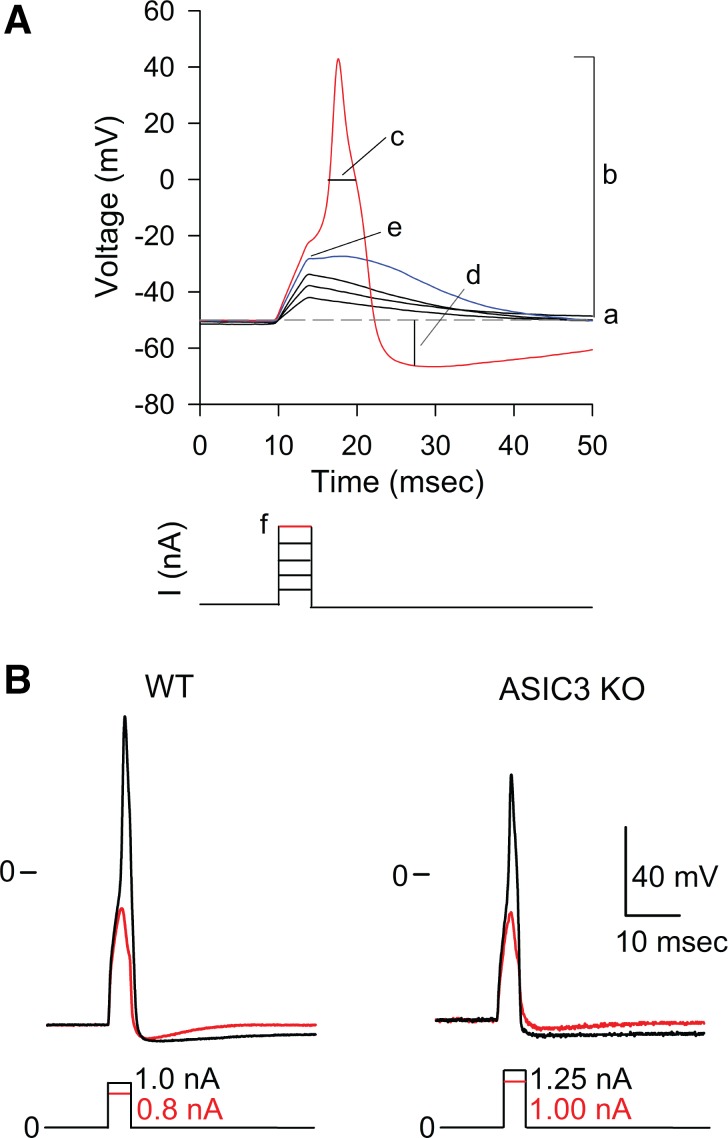Fig. 3.
Absence of acid-sensing ion channel 3 (ASIC3) does not alter the passive or active membrane properties of bladder sensory neurons. A: analysis of passive and active membrane properties of bladder sensory neurons. Representative voltage recordings obtained in the current-clamp configuration with the perforated patch-clamp technique from a DiI-labeled bladder sensory neuron. Action potentials were evoked by 4-ms depolarizing current pulses through the recording electrode. The current injection protocol is shown beneath the voltage traces. Letters refer to the passive and active membrane properties examined: a, resting membrane potential; b, action potential amplitude; c, action potential duration at 0 mV; d, magnitude of after hyperpolarization below resting membrane potential (AHP) (in mV); e, action potential threshold, which is defined as the greatest membrane potential (mV) achieved in response to a current pulse that does not trigger an action potential; f, rheobase, which is defined as the smallest amount of depolarizing current (nA) required to trigger an action potential. B: absence of ASIC3 from bladder sensory neurons does not alter action potential properties. The response of bladder sensory neurons to extracellular acidification was examined in the voltage-clamp configuration of patch clamp. Only neurons that displayed ASIC-like currents were further studied in the current-clamp configuration. To define action potential properties, a series of 4-ms rectangular depolarizing current pulses of increasing intensity were injected until an action potential was evoked. Representative action potentials evoked in response to electrical stimulation in bladder sensory neurons from WT and ASIC3 KO mice are shown. Current-pulse protocols are shown at the bottom of the tracings.

